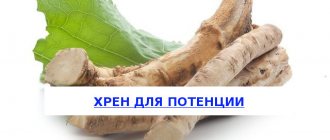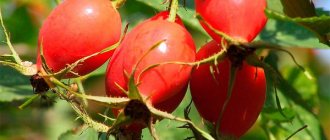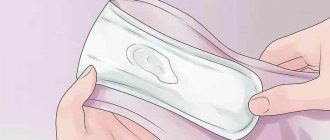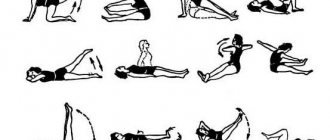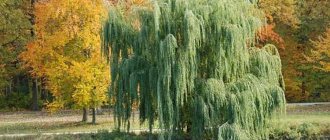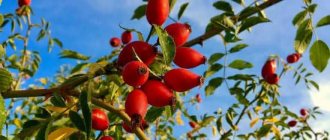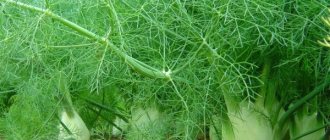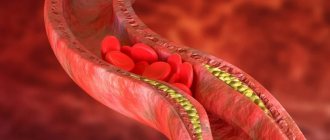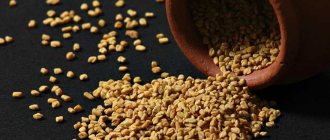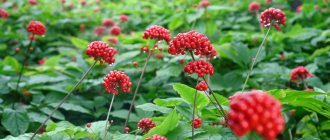Black cohosh, which is known as black cohosh or black cohosh, as well as red cohosh, is native to the humid forests of the North American continent. A plant of the Ranunculaceae family, blooming from early summer until autumn. Its medicinal properties were used by Indian tribes long before the colonization of America.
There are especially many indications for the use of black cohosh for women. It is not for nothing that one of the names of the plant is “Indian root”. Now black cohosh is used in pharmacology, folk medicine and for garden plantings.
Description of the plant
Cohosh is a perennial herbaceous plant that grows in one place for up to 20 years. It has an erect stem with a square cross-section. The leaves are large, of two types, growing from the root, forming a large rosette. The bush reaches a height of 1.5 m or more. Gardeners are attracted by the decorative appearance of the inflorescences - long racemes (up to 1 m), covered with sessile white flowers with pubescence.
The flowers emit an unpleasant odor, attracting flies and other carrion-loving insects for pollination.
Some of the popular names - stinkhorn, stinking black cohosh, stinking root - reflect this feature of the plant. In Rus' it was used to combat parasitic insects, hence the name black cohosh. The German name - silver candles - reflects the beauty of the blooming black cohosh.
Chemical composition
The chemicals in black cohosh are characteristic of buttercups; their interaction provides preparations from various parts of the plant with medicinal properties. Modern chemistry and pharmacology have well studied the composition of plants used in traditional medicine for a long time.
Cohosh is useful for women, as it has a unique composition.
The following were found in cohosh raw materials:
- flavonoids (formononectin) - substances that stimulate enzymatic activity and destroy tumor formations; killing viruses;
- saponins;
- alkaloids (have a positive effect on the central nervous system);
- phytoestrogens;
- palmitic and oleic acids;
- phytosterol;
- tanning compounds;
- salicylic acid;
- tannins and glycosides (cimigenol, acteol, actein, tsimitsifugoside);
- phenolic compounds;
- resins and essential oils;
- sucrose, starch, fructose;
- acids – methoxycinnamic, hesperidic, isoferulic;
- gum - a resinous substance with antitoxic action that stimulates intestinal activity;
- dopamine derivatives;
- complex of microelements: Fe, Ca, Mg, Se.
Medicinal properties
Cohosh, like all buttercups, is a poisonous plant, so collecting raw materials and using them for self-treatment is dangerous. Pharmacology and homeopathy include parts of the plant (roots are mainly used) in dietary supplements, herbal preparations, ointments, and tinctures. Most drugs are intended for women. Monotherapy for this plant is rare.
Plant activity extends to:
- a wide range of gynecological diseases and disorders;
- inflammatory processes in the body;
- rheumatism, neuralgia and joint diseases;
- nervous system disorders: hysteria, anxiety, severe excitability, insomnia;
- headaches and respiratory diseases;
- bronchial and cardiac asthma;
- kidney disease and urine formation;
- normalization of pressure;
- cardiac disorders;
- stimulation of the digestive glands;
- relieving pain and spasms of various origins;
- smooth muscles (relaxes);
- regulation of fat metabolism;
- visual impairment (cataracts);
- carbohydrate metabolism disorders (diabetes mellitus), atherosclerosis;
- destruction of neoplasms;
- increase in general tone;
- painful manifestations on the skin;
- infectious diseases with rash (anthrax, measles, diphtheria);
- testosterone production;
- toxins and poisons (snakes and other animals);
- sperm motility and timing of ovulation.
Indications for use
- rheumatism;
- migraine;
- colds;
- hot flashes during menopause;
- menstrual irregularities;
- infertility in women caused by hormonal imbalance;
- joint pain, headache and toothache;
- depression, hysteria, neurasthenia;
- heart disease (especially cardiac asthma);
- high blood pressure;
- inflammatory processes in joints, nasal cavity;
- sinusitis;
- arthritis, arthrosis.
Harm and side effects
Cohosh brings many benefits for women. When starting treatment, you need to take into account that taking medications with cohosh components is limited to a period of 6 months, after which you should take a break.
In some cases, when using it, the following may occur:
- allergic manifestations due to individual intolerance;
- nausea, vomiting, dizziness, bradycardia in case of overdose;
- stomach pain;
- blurred vision;
- weight gain and swelling.
If any negative manifestations occur, stop taking the medication and consult a doctor.
Contraindications
Cohosh for women is an alternative to therapeutic treatment. When choosing black cohosh preparations for use, be sure to familiarize yourself with the list of diseases and periods of life in which its use is prohibited, as it can lead to serious disorders that pose a danger to health and life.
The contraindications are as follows:
- liver dysfunction, its acute or chronic diseases;
- thromboembolism;
- individual intolerance to components;
- uterine bleeding;
- pregnancy;
- breastfeeding;
- estrogen-dependent formations;
- tumors;
- chronic severe diseases of the cardiovascular system;
- children's age (up to 3 years);
- low blood pressure;
- high photosensitivity of the skin.
In addition, cohosh preparations are incompatible with some medications (for example, to lower blood pressure), as well as with medications containing cohosh raw materials.
Healing properties
Cohosh is a plant that is also used in medicine. Chinese medicine highly values the qualities of the flower; North American Indians have long used it to treat many diseases. Today doctors recommend it for:
- weakened immune system;
- edema and tumors;
- diabetes mellitus;
- atherosclerosis;
- cataracts;
- gynecological diseases.
It prevents the development of osteoporosis and arthritis. It can significantly improve the condition of a patient with diseases of the cardiovascular system. This effect is achieved due to the presence of the following components in the flower:
- saponins;
- flavonoids;
- tannins;
- sterols;
- resins;
- alkaloids;
- phenolcarboxylic acids.
In oriental medicine, a decoction of black cohosh is popular. It helps with toothache and skin rashes.
Indications for use for women
Cohosh for women has ancient traditions of use, dating back to the culture of American aborigines. This is due to the fact that the raw materials contain phytoestrogens similar to female sex hormones. They normalize the body’s hormonal levels and eliminate various manifestations that arise from imbalance.
Use in gynecology is aimed at:
- normalization of the menstrual cycle;
- pain during menopause and PMS;
- moderate menstrual bleeding;
- amenorrhea (lack of menstruation);
- dysmenorrhea (painful condition during menstruation);
- postpartum pain and complications;
- infertility treatment;
- facilitating labor;
- uterine prolapse.
Cohosh substances do not directly affect the uterus, which does not lead to endometrial growth. During menopause, taking black cohosh helps to cope with hot flashes, tachycardia, vaginal dryness and other unpleasant symptoms of this period.
Side effects
Numerous studies have proven that the use of preparations based on Voronets racemosus does not lead to a toxic effect. Homeopathic remedies are considered safe if the dosage is followed and there are no contraindications to use.
The following side effects occur extremely rarely:
- upset stomach (when taking certain types of medications);
- allergic reactions;
- bleeding in women (it has not been proven that they arose precisely because of taking medications).
Some scientists have expressed concern that long-term use of herbal preparations causes endometrial hyperplasia and cancer in the future, but this assumption has not been proven.
Homeopathic preparations containing black cohosh
The pharmaceutical industry widely uses black cohosh in the production of drugs.
Some of them are monoform, but most, in addition to black cohosh, include other plant and animal components:
| Drug name | Impact, indications for use, dosage form, administration. | Side effects, contraindications | Prices (RUB) |
| Klimadinon | Prescribed for menopause, 1 tablet twice a day, relieves negative symptoms. The drug is in tablet form. Does not contain additives of other herbs. The effect is noticeable no earlier than after 14 days. Duration of treatment – maximum 3 months. |
Do not use:
| 330 — 610 |
| Mulimen | Drops containing, in addition to cohosh, St. John's wort, nettle, jasmine, mineral compounds and substances of animal origin. Prescribed for menopause, cycle disorders, PMS, mastopathy. Take 15-20 drops 3 to 5 times a day. | No side effects were found. Do not use: if you are sensitive to the components. | 1300 — 1400 |
| Menopause day-night | Tablets for day and night use. Prescribed for menopause. In addition to black cohosh, the drug contains: hops, ginseng, passionflower, valerian, green tea. The effect will appear when taken for 30 days. | There are no side effects. Do not use: hypersensitivity, atherosclerosis, grade 2-3 hypertension. | 420 — 1200 |
| Klimaktoplan | The drug is in the form of tablets, which also contain sepia, lachesis, ignace, sanguinaria. Indicated for menopause, cardiac disorders, for the prevention of genital cancer in the elderly, normalization of the autonomic part of the nervous system and hormonal levels. Prescribe 1-2 tablets three times a day. | Allergic reactions are rare. Do not use: pregnancy, lactation, hypersensitivity to the drug. | 500 — 800 |
| Cohosimifuga-Homaccord | Contains strontium. Effective for treating joint diseases, neuralgia, relieving spasms and pain. Available in the form of drops and ampoules for injection. | There is no information about side effects or contraindications. | 1200 — 1300 |
| Qi-klim | Tablets containing only black cohosh extract. Used to relieve symptoms of menopause. Effect – after 2-4 weeks from the start of use, take no longer than 3 months. |
| 200 — 400 |
| Cohosh racemosa | The drug is available in various pharmacoforms: drops, tablets, capsules, dry extract. Effectively fights fatigue, nervous exhaustion, VSD, and symptoms of menopause. | Do not use: liver pathologies, pregnancy, lactation, thromboembolism, vaginal bleeding, estrogen-dependent formations, allergies. | 430 — 1400 |
| Remens | Alcohol drops containing other herbal ingredients. Active influence on the symptoms of menopause, normalization of the cycle and gynecological inflammation. Take 10 drops 3 times a day for 3-6 months. |
| 150 — 800 |
| Estrovel (Valeant) | Dietary supplement Available in tablets and capsules. Prescribed for the treatment and prevention of: PMS, menopause, recovery after gynecological operations, chronic cystitis, after 35 years for the prevention of aging. | Allergic reactions. Do not use: pregnancy, hypersensitivity, lactation, phenylketonuria, age under 14 years. | 430 — 560 |
Tinctures using black cohosh
When making tinctures, alcohol or high-quality vodka is used, and the intake rate is expressed in drops:
- To lower blood pressure and relieve inflammation. Prepare a tincture of the roots using good quality vodka (ratio 1:5). The drug is infused for 10 days in the dark and in a tightly closed container. Take 30 drops in the mornings and evenings in courses of 20 days.
- For insomnia, hysteria, depression, with symptoms of VSD. To prepare the tincture, pour the chopped roots of the plant with vodka (1 tablespoon - 1 glass) and leave for a week without access to light, shaking the container periodically. Take 20 drops per day until improvement occurs (but not more than 6 months).
- Those who suffer from migraine attacks or experience chronic fatigue will benefit from an alcohol tincture of the rhizome. 70% alcohol is poured into the raw materials (1:5) and kept in the dark for 7 days. Be sure to shake the container once a day. The course of treatment is 1.5 months. 40 drops twice a day, diluting them with water.
- For hypertension, a vodka tincture of the roots is used. Infusion lasts 3 weeks. Take 20 drops, diluting them in ½ glass of water, 1 time per day.
- For women suffering from osteoporosis, it is recommended to take a strong alcohol tincture.
The roots, drenched in vodka (100 g - 1 l), are infused for 30 days, filtered and drunk daily in the morning on an empty stomach, a dessert spoon. Course of admission – 1-3 months. For men, taking this drug will not bring benefit and can cause hormonal imbalances.
Black cohosh plant: home remedies
Alcohol infusion for inflammation and hypertension
The crushed root of rattlesnake is poured with vodka in a ratio of 1:5, tightly closed, infused for 10 days in a dark place, then filtered. The prepared alcohol infusion is taken orally, 30 drops in the morning and evening, regardless of food. Duration of therapy – 20 days, the course can be repeated after 10 days;
Infusion for pain, menopause and cycle disorders
1 teaspoon of crushed black cohosh root is poured into 0.25 liters of boiling water, left for 30 minutes, then filtered. The prepared infusion is taken orally half a glass in the morning and evening 30 minutes after meals. Duration of treatment – 30 days;
A decoction for general weakness, nervous disorders, inflammatory processes
1 teaspoon of the plant is poured into 0.25 liters of water, put on fire, brought to a boil, covered with a lid and boiled for 10 minutes. Then the liquid is infused for 2 hours and filtered. The prepared decoction is taken orally, 50 ml 4 times a day. The duration of therapy is determined individually, depending on the pathology.
Source
Decoctions and infusions
The technology for preparing a decoction or evaporation involves thermal exposure (boiling) to the raw materials and infusion of the solution:
- With a weakened body and nervous disorders. Pour the black cohosh raw material with cold water (1 teaspoon per 1 glass) and, after boiling, cook for 10 minutes. After two hours of infusion, the decoction can be taken ¼ cup 4 times a day. The duration of treatment depends on the degree of development of the disease.
- A decoction of the roots of the plant helps against most gynecological problems. The raw materials are brewed with boiling water (1.5 g - 1 glass) and boiled for 9 minutes, infused for 2 hours and filtered. The same recipe will help with joint pain and bronchial asthma src=»https://healthperfect.ru/wp-content/uploads/2018/09/tsimitsifuga-dlya-zhenchin-8.jpg» class=»aligncenter» width=» 600″ height=”393″[/img]
- The decoction will help with pain and menstrual irregularities: 1.5 g of roots are boiled in a glass of water for 10 minutes. and insist for 5 hours. Reception – 3 times a day, 3 tbsp. l.
- For diseases of the kidneys and digestive organs. Three times a day, 1 tbsp. l. take a decoction of black cohosh leaves.
- Inflammation in the oral cavity and food poisoning are treated with a sweet decoction of black cohosh. Powder of leaves or roots of the plant is poured with boiling water (50 g -0.5 l) and boiled for 2 hours. Sugar is added to the solution (100 g - 100 ml). You can take the syrup up to 4-6 times a day, ½ tsp. Emotional mood swings can also be corrected with this drug.
- For menopause and cycle disruptions, a water infusion is used. The raw material is poured with boiling water (1 tsp - 1 glass), left for half an hour and taken half a glass after meals for 1 month.
- The evaporation of dissolved cohosh raw materials has a hemostatic effect. 9 liters of boiling water, which is poured over 110 g of raw materials of roots and leaves, should be brought to a volume of 3.6 liters. Take the concentrated solution 6-8 times a day, 0.5 cups.
Instructions for use
The method of use depends on the form in which the patient takes the herbal remedy. Black cohosh extract is included in some homeopathic preparations. They are produced in the USA and some European countries. In this case, the specific dosage will depend on the instructions provided by the supplement manufacturer.
The products are available in the form of soluble powder, tablets or liquid substance. Experts believe that the daily dose for oral administration of dry matter should be no more than 200 mg. In liquid form, the dosage will be up to 2 ml of solution. In addition, the specific dosage depends on the type of disease for which black cohosh is used.
At home, a decoction of the plant's roots is used. To do this, you need to boil 1.5 grams of rhizome in a glass of water. The product is infused for 2 hours, then filtered and cooled. Drink the decoction up to 4 times a day, ¼ cup.
Solgar, Black Cohosh Root Extract, 60 Veggie Capsules
See the price on iHerb Reviews on iHerb
Compresses and lotions with black cohosh
Compresses are used externally for skin problems, gynecological diseases, and diseases of the oral cavity:
- Muscle pain and spasms, joint diseases, rheumatic pain. A compress of a decoction of black cohosh roots is placed on problem areas: they are boiled in a small amount of water for about 45 minutes.
- Stomatitis and dental diseases are treated with juice squeezed from the roots of black cohosh. A tampon soaked in juice is kept on the sore spot for 15 minutes. up to 7 times a day.
- Skin diseases, joint pain, rheumatic inflammation can be relieved by applying a compress of ground fresh stems and leaves of the plant to the sore spots.
- For external use and enemas for prostate cancer, mastopathy, diseases of the vagina and cervix, black cohosh oil is used. To prepare it, you need fresh, finely chopped roots, which are poured with unrefined vegetable oil (preferably olives). The mixture is infused for about 1 month. In the dark, preventing the temperature from rising and stirring.
- Powdered roots mixed with honey in equal quantities will help in the treatment of measles. It is recommended to treat rashes on the body with this disease with a decoction of black cohosh roots.
In 1993, black cohosh became a prize winner from the Royal Horticultural Society of Britain. The American Pharmacopoeia had black cohosh in its lists for a hundred years.
Explorers of Canada, Europe and Australia at the end of the 20th century. stated the toxicity of the plant's raw materials to the liver and the risk for women of developing uterine tumors with long-term use of black cohosh preparations. However, the American expert commission did not find a connection between pathologies and taking the herb.
Article design: Oleg Lozinsky
